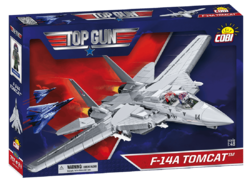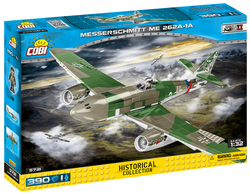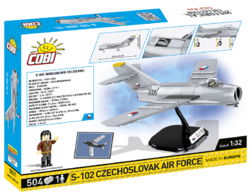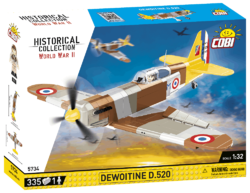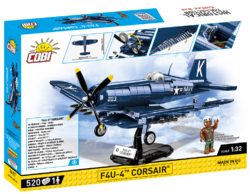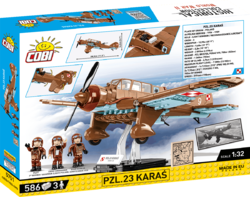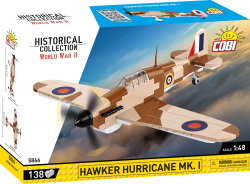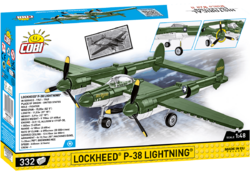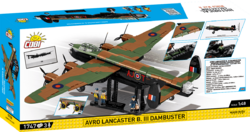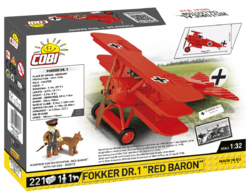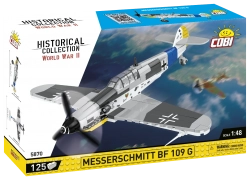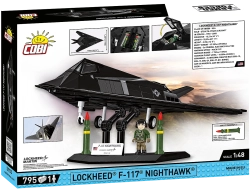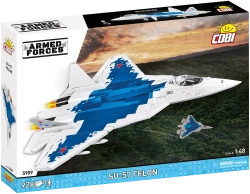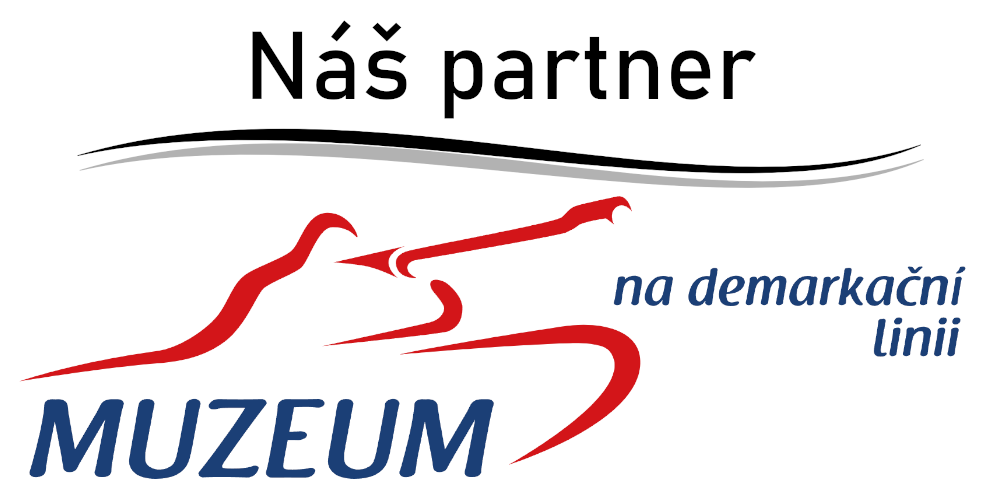| List Number: | COBI-5750 |
| EAN: | 5902251057503 |
| Warranty: | 24 months |
| Manufacturer: | COBI |
| Loyalty Points: | 12 |
| Price excluding VAT: | 1 610,92 Kč |

You know that:
- The machine first flew on 28 July 1935.It was during the first flight that it was decided that chief designer Edward C. Wells and Gifford Emery had created something extraordinary, as the machine exceeded almost all expected parameters.
- US Army officials were so surprised by the bomber's performance that they ordered 65 machines for the USAF before the competition for the new bomber was judged.
- The Seattle Times reporter Richard Smith, who was so impressed by the size and weaponry of the bomber that he called it "The Flying Fortress" in his article, also watched the first takeoff. The designation was so apt that it made its way into many official records.
- The early versions also had a few imperfections, but from the E series onwards it was an extraordinary machine that was hard to find a rival.
- The aircraft was already equipped with a super-secret NORDEN bomb sight, which the crew had taken out just before take-off and had to return immediately on their return.
- All the safety measures around the sight were actually unnecessary, because already in 1938 one of the engineers, Herman Lang, had already handed over the documentation to the Germans.
- The inventor of the sight, Carl Norden, invented the principle of precision targeting to save civilian lives.
- Mrs Norden never forgave her husband for creating the sight. To her, it was a weapon of war like any other.
- The B-17 bomber showed extraordinary durability, returning from action heavily damaged, torn apart but still airworthy.
- Of the 1.5 million tons of bombs dropped on Nazi Germany, 640,000 tons were dropped from B-17s.
- Boeing produced 14-16 a day. This rate could not be matched by any adversary's production on the axis of evil.
- A total of 12,731 were produced.
- The price per machine was about $238,329 at the time.
- Today there are about 6 airworthy units around the world.
- This particular machine from the 8th Air Army, 401st Bombardment Group and 615th Bombardment Squadron was named "Mary Alice" by the crew after Captain John W. Henson's daughter. The bomber flew over 28 missions.
Technical parameters:
- dimensions: wingspan 31.6 m, length 22.8 m, height 5.9 m
- empty weight 16 400 kg, maximum take-off weight 29 660 kg
- power plant 4 x Wright R-1820-97 radial engines, each with 895 kW
- maximum speed 460 km/h
- climb rate 4,6 m/s
- maximum flight level 10 800 m
- range 3 200 km
- armament 12x M2 Browning machine gun 12.7 mm calibre + 3 600 kg of aerial bombs
- crew 10
From the memoirs of B-17 gunner Sgt. William J. O'Brien:
"I was a gunner on a B-17G designated Liberty Belle that was part of the 306th Bombardment Group. Our mission was to bomb the oil complex in Merseburg, Germany. It was one of the most dangerous targets because it was protected by heavy anti-aircraft defenses and fighter jets. During the raid, we were hit by several shells and one of our engines caught fire. We had to leave the formation and try to get back to England. On the way we were attacked by German fighters which destroyed two more engines and damaged the tailplane. We lost altitude and speed and had no chance of survival. Fortunately, Allied Mustang fighters showed up to protect us and escorted us to the nearest airfield. We managed to land, but the plane was so damaged that it never flew again."
| Version (series) | 08/2023 |
|---|---|
| Recommended age | 10+ |
| Number of pieces | 1210 pcs |
| Package weight | 1640 g |
| Scale | 1:48 |
| Number of figurines | 2 pcs |
| Box dimensions | 62 x 32 x 7,5 cm |
| Dimensions after assembly | 66 x 49 x 13 cm |
| Contains luminous blocks | No |
| Material | Plastic |
| Collection | World War II |
| Compatible with other brand of kits | Yes |





















































